In the early days of designing her SS21 collection during lockdown, Molly Goddard felt obliged to move towards a “pared-back, clean and chic” aesthetic. Then, the 31-year-old designer says, she suddenly thought, “F–k it! I don’t want to see black and white clothes. I want to see colour, texture, fun things.” Thus the romantic, frothy tulle gowns in a riot of hues that we (Rihanna, Edie Campbell and Adwoa Aboah included) know and love, have returned to London Fashion Week—this time in a pre-recorded show that aired on the British Fashion Council website on 19 September.
Shot at Goddard’s studio in east London—an old umbrella factory that was once the UK base for German photographer Wolfgang Tillmans—the BFC/Vogue Fashion Fund winner anticipates that the expansive windows and recently installed runway will become recognisable features of her shows in the future. After all, this is a designer who finds inspiration for her ethereal creations not in far-flung destinations, but in her immediate surroundings—her every day, the place where she honed her pattern-cutting skills as a BA and MA student at Central Saint Martins, and the city she continues to call home.
In between castings, Goddard spoke to Vogue about the ideas behind her latest designs, the importance of supporting local businesses and how she hopes the industry will evolve from here.

What have the past few months looked like for you and your team?
We’ve been back in the studio almost three months. I missed being here. During lockdown, the gallery next door moved out so we took over their space. We’re a team of 10 full-time staff, which goes up to 20 when we’re finishing a collection. The studio is about three times the size it was originally so it’s even easier for us to social distance.
It felt like quite a crazy investment in lockdown, but then we factored in the expense of doing shows and showrooms, and it actually works out a lot cheaper because we can do all that in the studio now. We’re also gearing towards launching bridal soon, so while it’s currently a white empty gallery space we’ll transform an area into a lovely, light, fitting space.
What inspired you to inject so much colour into the collection and was there anyone in particular that you had in mind while you were designing?
I’ll always be drawn to colour, but I didn’t think there would be quite so much this season—just hints here and there. It’s turned into a very colourful collection with grass green, magenta pink, bright orange and yellow polka dots. There’s lots going on.
I’ve never been any good at having a muse. I’m always thinking about a lot of different women, whether it’s my mother, my sister or someone I know from my local area or a specific model. This collection is very much about my own personal style and the way that I like to wear clothes.

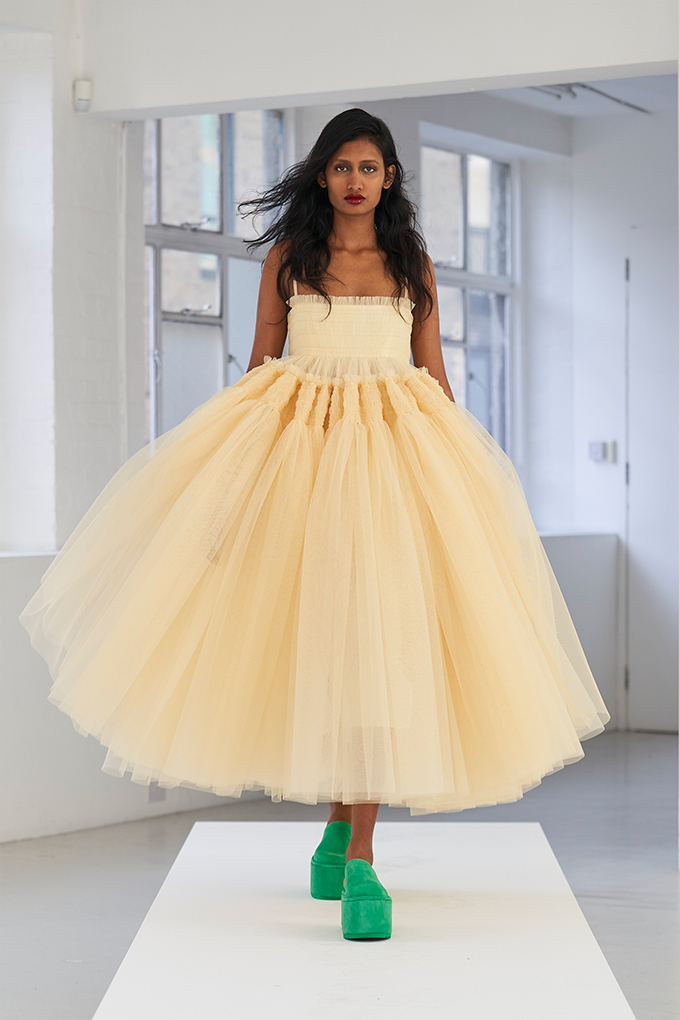
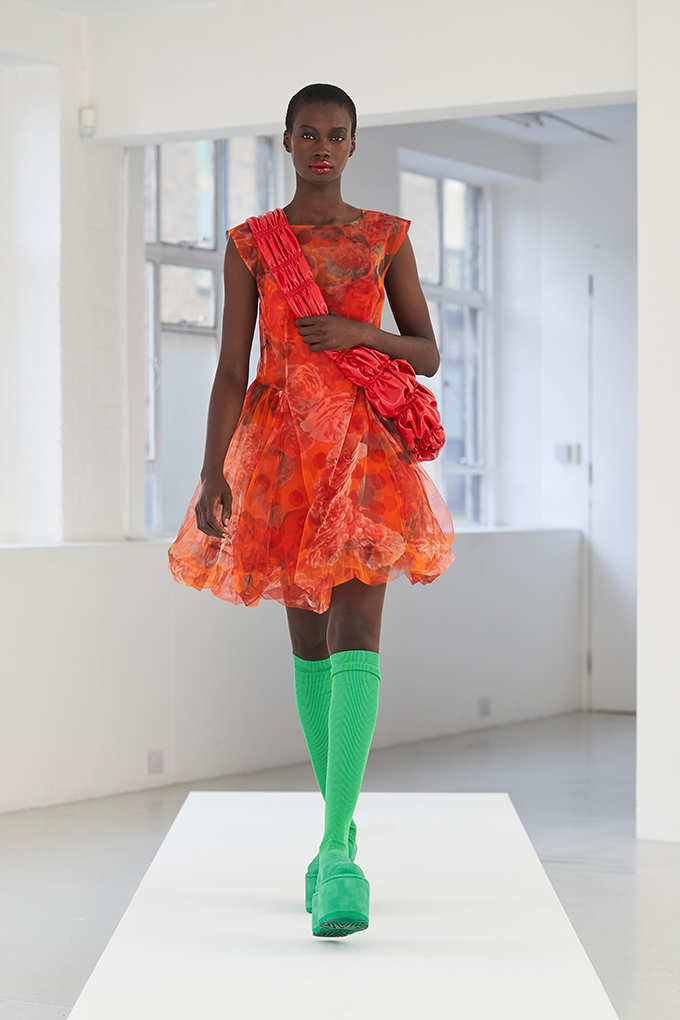

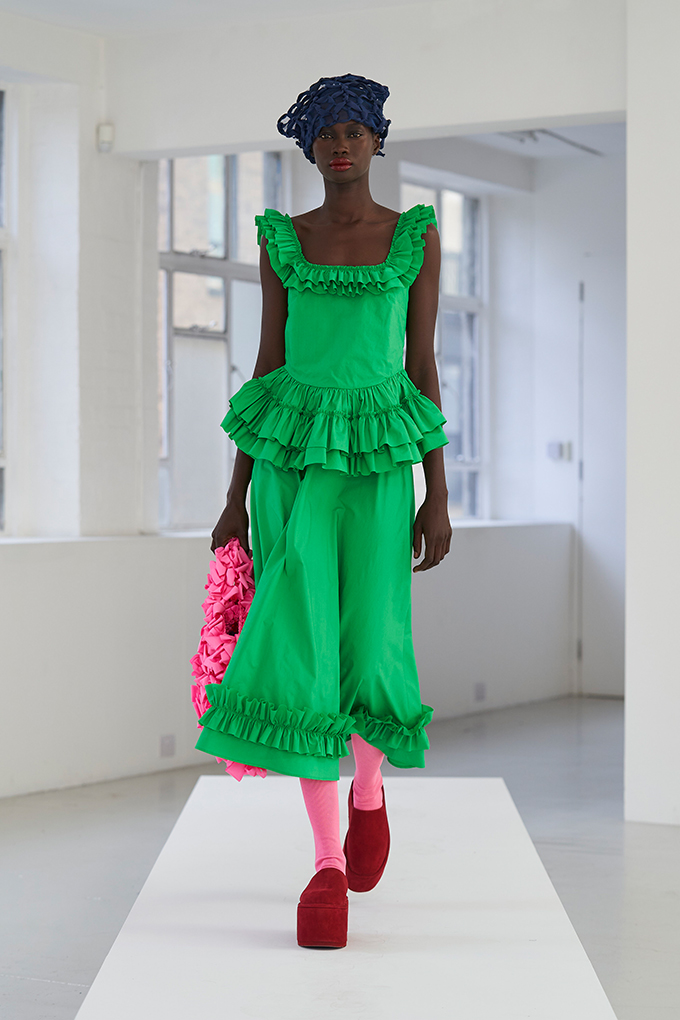

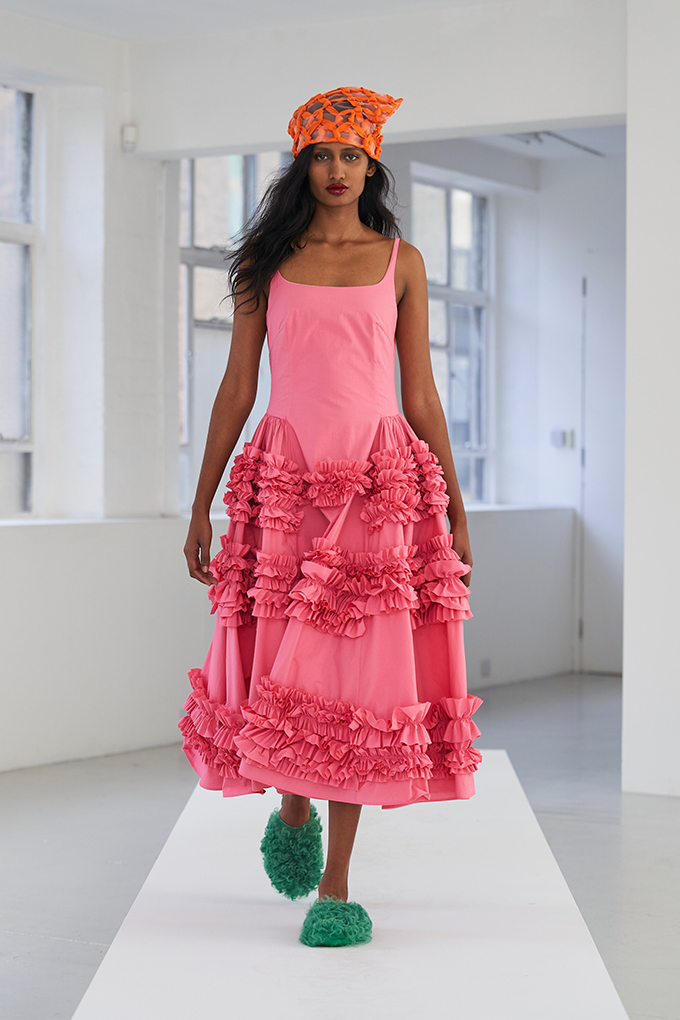


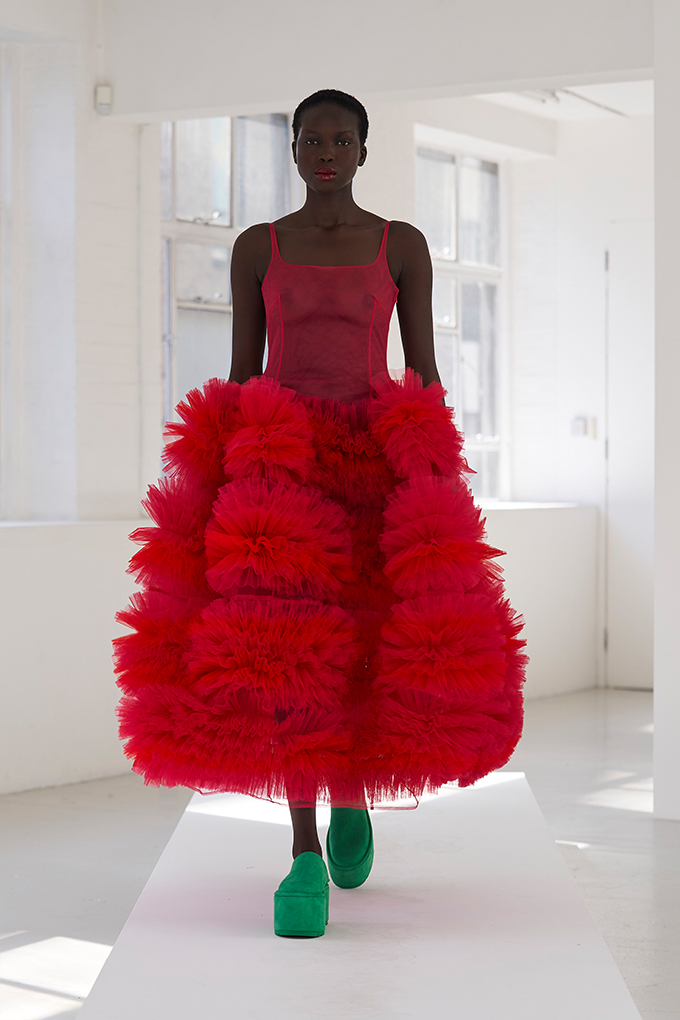
So how do you like to wear your clothes and how do you want them to make you feel?
I want clothes that make me feel happy, to feel better about myself. I like to find my own way of wearing garments—layering things up and having fun—so it’s different from what anyone else has, and that way I never repeat an outfit.
During lockdown, I looked at all the clothes I’d saved for a special occasion and thought, ‘What on Earth was I doing?’ I should have been wearing them and now I regret not being able to wear them out. It’s easy to just put on a tracksuit if you’re working from home, but I found the best days were the days I had a shower, washed my hair, put some makeup on and wore a dress. So I’m remembering that now and wearing a dress and feeling comfortable. Being comfortable is incredibly important.
Tell us about the styling and accessories this season.
We’ve made bags again, this time in crochet, patent faux leather and nylon. They’re slouchy, comfortable shapes—very fun, colourful and textural.
What dictates the casting decisions for your shows?
We’re working with [British Vogue’s fashion bookings director] Rosie Vogel again this season. Casting always has a lot to do with personality; it’s nice to have people who enjoy wearing the clothes. Aside from that, we’re just looking for strong, happy models.

Have there been many challenges in making the collection due to the ongoing pandemic?
Most of our fabrics are sourced in Europe so because everyone opened up quite early [post lockdown], we managed it. There’s definitely been limitations—people are harder to get hold of and there are longer lead times, but buying fabric is always a nightmare. We’ve revisited some of the fabric we’ve used before—materials and colour that I’ll never stop enjoying, such as white cotton, and pink and cream tulle.
Around 90 per cent of the manufacturers who make our clothes are UK or London based. And it’s amazing because it means we have a real community of people around us and we could continue working for the best part. This is something that I don’t want to change, even though it’s more expensive. I love the fact that everything is localised and ‘Made in England’.
Do you think you’ll continue doing pre-recorded fashion shows?
I love doing shows, and I miss them, but it’s nice to know there’s another way. [That said] I think it’s so important for people to see the clothes in real life because you don’t get the same experience through a screen.
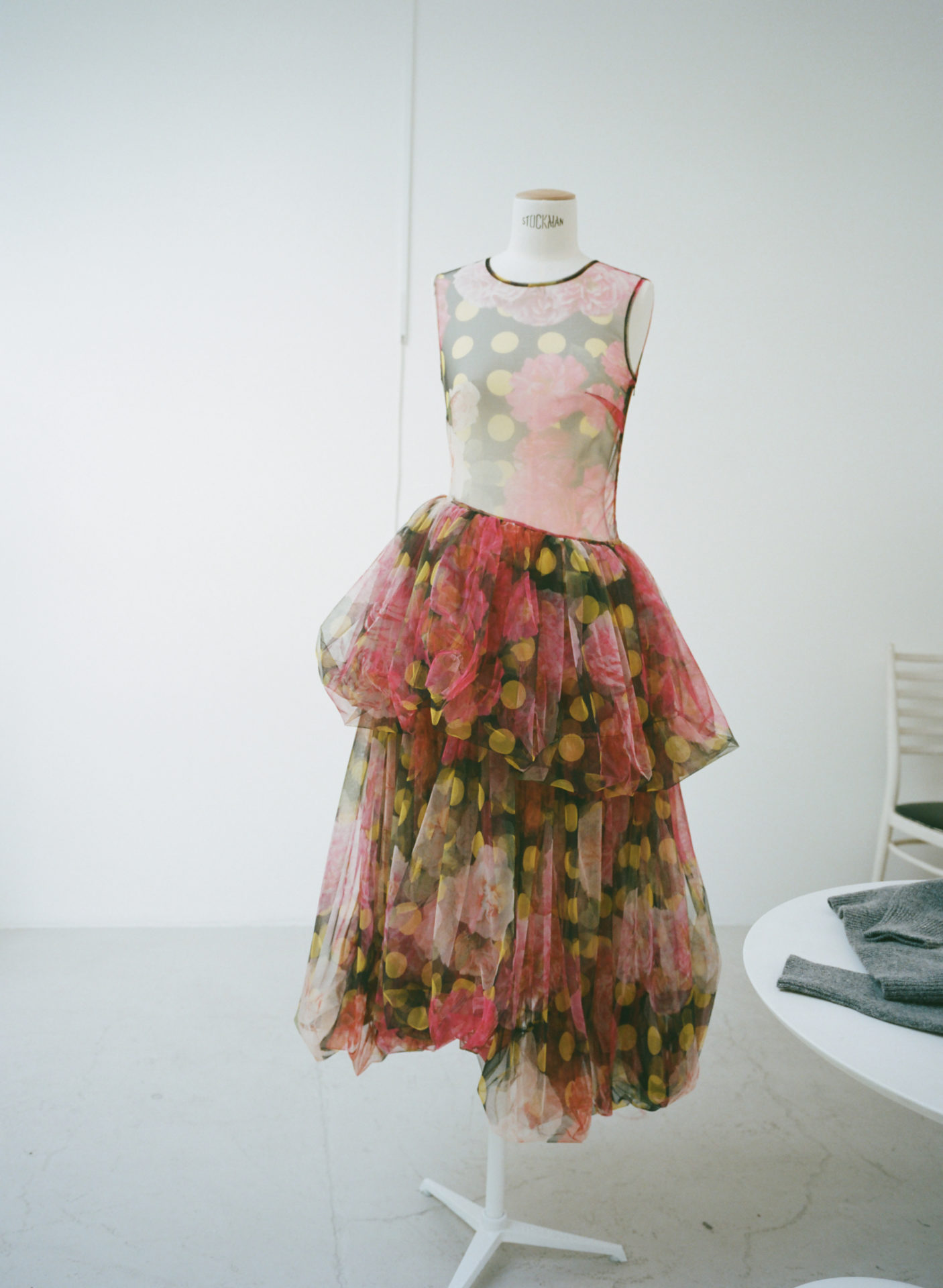
More broadly speaking, how do you hope the fashion industry will evolve from here?
Travel is a big problem. Now, with so much being digital, the world is a lot smaller and you don’t need to fly to another country for a day or a few hours for a meeting. I hope that stops.
Working with local businesses and resources around you is really important, and [so is] being more conscious about how far things have to be shipped to get to you. I’m quite frugal in that sense, I’ve always enjoyed finding more [economical] ways of doing things. Having limitations can be healthy and creatively inspiring—it makes you realise the impact of your actions.





